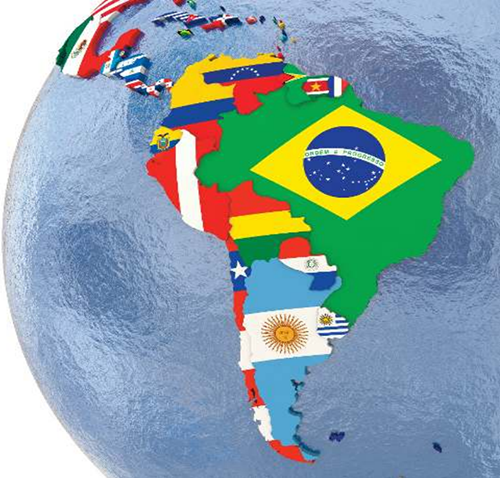RIO DE JANEIRO, BRAZIL – It is the deepest recession in over a century, but there are also some signs of hope. The collapse of the Latin American economy this year will be tremendous, the second largest in the world, behind only that experienced by the Eurozone (8.3 percent GDP drop), although also a little less than the initial projection.

The International Monetary Fund (IMF) on Tuesday, October 13th, upgraded its projection for the drop in GDP in 2020 – the 9.4 percent decline projected in June remains equally alarming, but substantially lower, at 8.1 percent. The projection for a rebound in 2021 remains virtually stable, only a tenth lower than expected, with a rebound of 3.6 percent.
The collapse caused by the coronavirus will be widespread throughout the region, but -with the exception of Venezuela- Peru, Argentina and Ecuador will experience the worst drops, of 13.9, 11.8 and 11 percent, respectively. The position of the latter two, embroiled in the IMF’s bailout plans, is particularly compromised.
However, the improved outlook is widespread. In Brazil, Latin America’s largest economy, the 9.1 percent drop that the IMF has projected for this fiscal year will stand at 5.8 percent. In 2021, the rebound will reach 2.8 percent, which means that, with a bit of luck, the South American giant will recover the pre-crisis GDP level throughout 2022 or, at the latest, in 2023. In the region’s second largest economy, Mexico, the improvement is lower, but also significant: the projected 10.5 percent collapse in June now stands at nine percent, and the rebound in 2021 will be 3.5 percent, two tenths more than anticipated so far. However, with these numbers, Mexico will be one of the world’s large countries taking longest to regain all the ground lost during the pandemic.
The upward review of IMF projections for the region in 2020 occurs in parallel with a general improvement on a global scale: with less than three months to the end of the year, the global GDP is still expected to collapse by 4.4 percent, five tenths less than projected in June. The global economic rebound in 2021, though slightly lower (two-tenths), remains clearly above five percent. If these projections are met, the world will return to the pre-Covid-19 level before the end of next year, something that was not clear until now. Nevertheless, by early 2022 per capita income -an indicator that takes population growth into account- will still not return to pre-crisis levels.
The indicators for Latin America and the Caribbean are worse. To return to the pre-recession GDP level, the bloc will have to wait a little longer: at least until 2023, according to the latest World Bank projections supported by the new IMF macroeconomic framework. It will also continue to be the most affected region in the emerging world, at the opposite end of China: while the Asian giant will close 2020 in the black (+ 1.9 percent) and grow by 8.2 percent in 2021, middle-income countries will drop by 3.3 percent on average this year, less than half that of the Latin American bloc. Among the large emerging countries -with a population of 100 million people or more- Mexico and Brazil will be the two that will drop the most, second and third to India (-10.3 percent), respectively.
Gita Gopinath, the IMF’s chief economist, on Tuesday explained a trend that had already been perceived since the start of the health crisis: the countries most dependent on services that require interaction between people and exporters of raw materials (particularly oil) will be the most impacted, while the most industrialized nations will leave the recession earlier. With this pattern, Latin America has the potential to lose on several fronts: the Caribbean is one of the world’s most tourism-reliant regions; several countries in the area -particularly in South America- depend on revenues from the export of basic products; and virtually none of them, except Brazil and Mexico, have industry as a pillar of their economies. However, the worst projections drawn up in June, when strict confinements were still the norm and no indicator was positive, are gradually falling behind.
Source: El País

